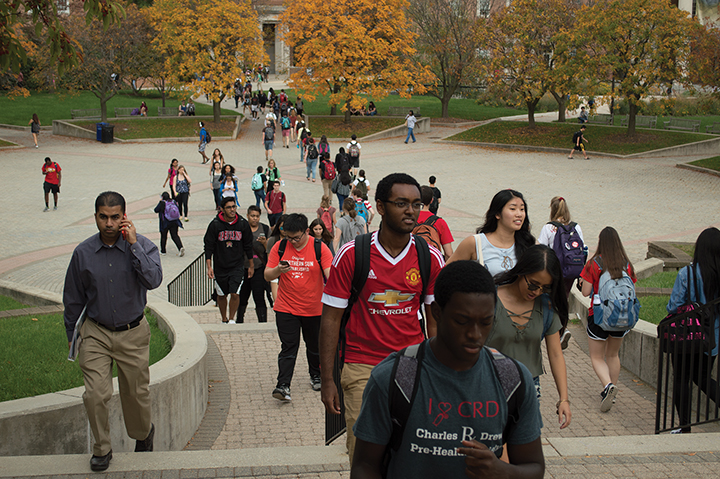Views expressed in opinion columns are the author’s own.
Last month, my JOUR201: News Writing and Reporting I professor devoted an entire class to common AP Style mistakes. We discussed capitalization, spelling out certain numbers and, of course, the hotly debated Oxford comma. My class almost exploded in outcry for our beloved grammatical companion. I immediately felt the passion in the room. And it was this passion — not just for the Oxford comma but for our shared love of journalism — that still resonates with me during my late nights writing articles (as boring as AP Style can be).
With the same tenacity as our discussion on the Oxford comma, I also receive the opposite reaction: “Good luck finding a job with that!” Sometimes, it’s almost understandable. It’s okay, Maris. They don’t know what your classes are like. And while these statements warrant nothing more than an eye roll, they perpetuate a divide between the humanities and STEM fields, rather than valuing both for their contrasting skill sets.
A common argument I hear from my STEM major friends is that their fields of study are more stressful than mine. Thinking that we can measure the worth of our majors based on our stress levels is unhealthy and extremely problematic. The Tab, an online news platform for campuses across the country, recently released a survey of 1,500 American college students and their stress levels throughout the week based on their major. The top three, unsurprisingly, are STEM-based or hard science based: medicine, nursing and architecture. In the top 15, only one major doesn’t belong in STEM. This Tab survey is not the only time numbers have been used to characterize inherently qualitative variables. While interesting, studies like these perpetuate a hierarchy of study based on stress — equating the worth of certain majors based on a variable that no major should work toward nor take pride in.
Loose measurements such as stress levels don’t account for the different challenges and skills associated with majors in and outside of the STEM fields. Claire Yoo, a freshman on the path to majoring in studio art, said the stigma stems from preconceived notions about the arts.
“There’s the major misunderstanding that being an art major is easy because ‘all we do is draw,'” she said. “But what people should understand is that each major has its own challenges. While accounting majors may have to be skilled at math, art majors have to learn and acquire a specific set of skills as well.” Similarly, in my journalism classes, my assignments require me to write concisely, vividly and accurately — all difficult skills, which are very different and hard to compare to those required for STEM courses.
The modern age’s tendency to compare these fields creates a divide, “an artificial line between art and science, one that did not exist for innovators like Leonardo da Vinci and Steve Jobs,” notes Dr. Loretta Jackson-Hayes, a chemistry professor at Rhodes College. Instead of constantly divorcing STEM and non-STEM, both should be valued at great lengths — used, even, to strengthen the other.
“The need to teach both music theory and string theory is a necessity for the U.S. economy to continue as the preeminent leader in technological innovation,” according to an editorial for Scientific America. The article also references Steve Jobs as an unconventional mogul in the technology world. Jobs, who was not a hardware engineer nor a coder, once said, “It’s technology married with liberal arts, married with the humanities, that yields us the result that makes our hearts sing.”
With the global push toward STEM, more and more academic institutions are pushing for an education that divides sciences from the arts, humanities and social sciences. Just a few weeks ago, President Trump’s federal budget plan proposed cutting the National Endowment for the Arts and the National Endowment for the Humanities — which no American president has proposed before. It is dire moments like these when we must realize more than ever the importance of the humanities and the sciences, that we need a vast education to create tangible change in our country. The two cannot be separated and it’s more important than ever that they coexist.
Maris Medina is a freshman journalism major. She can be reached at marismedina29@gmail.com.



